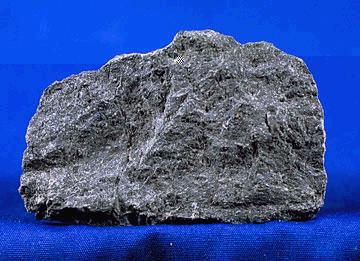Sima (geology) on:
[Wikipedia]
[Google]
[Amazon]
 In
In
 In
In geology
Geology (). is a branch of natural science concerned with the Earth and other astronomical objects, the rocks of which they are composed, and the processes by which they change over time. Modern geology significantly overlaps all other Earth ...
, sima () is an antiquated blended term for the lower layer of Earth
Earth is the third planet from the Sun and the only astronomical object known to Planetary habitability, harbor life. This is enabled by Earth being an ocean world, the only one in the Solar System sustaining liquid surface water. Almost all ...
's crust. This layer is made of rocks rich in magnesium
Magnesium is a chemical element; it has Symbol (chemistry), symbol Mg and atomic number 12. It is a shiny gray metal having a low density, low melting point and high chemical reactivity. Like the other alkaline earth metals (group 2 ...
silicate mineral
Silicate minerals are rock-forming minerals made up of silicate groups. They are the largest and most important class of minerals and make up approximately 90 percent of Earth's crust.
In mineralogy, the crystalline forms of silica (silicon dio ...
s. Typically, when the sima comes to the surface, it is basalt
Basalt (; ) is an aphanite, aphanitic (fine-grained) extrusive igneous rock formed from the rapid cooling of low-viscosity lava rich in magnesium and iron (mafic lava) exposed at or very near the planetary surface, surface of a terrestrial ...
, so sometimes this layer is called the 'ocean layer' of the crust. The sima layer is also called the 'basal crust' or 'basal layer' because it is the lowest layer of the crust. Because the ocean floors are mainly sima, it is also sometimes called the 'oceanic crust
Oceanic crust is the uppermost layer of the oceanic portion of the tectonic plates. It is composed of the upper oceanic crust, with pillow lavas and a dike complex, and the lower oceanic crust, composed of troctolite, gabbro and ultramaf ...
'.
The name 'sima' was taken from the first two letters of silica
Silicon dioxide, also known as silica, is an oxide of silicon with the chemical formula , commonly found in nature as quartz. In many parts of the world, silica is the major constituent of sand. Silica is one of the most complex and abundant f ...
and of magnesia.
Comparable is the term '' sial'' (another antiquated blended term), which is the name for the upper layer of Earth's crust (continental crust
Continental crust is the layer of igneous, metamorphic, and sedimentary rocks that forms the geological continents and the areas of shallow seabed close to their shores, known as '' continental shelves''. This layer is sometimes called '' si ...
) , namely rocks rich in aluminium
Aluminium (or aluminum in North American English) is a chemical element; it has chemical symbol, symbol Al and atomic number 13. It has a density lower than that of other common metals, about one-third that of steel. Aluminium has ...
silicate minerals
Silicate minerals are rock-forming minerals made up of silicate groups. They are the largest and most important class of minerals and make up approximately 90 percent of Earth's crust.
In mineralogy, the crystalline forms of silica (silicon dio ...
.
Petrology
The sima has a higher density (2800 to 3300 kg/m3) than the sial, which is due to larger amounts of iron and magnesium, and smaller amounts of aluminium. When the denser sima comes to the surface it formsmafic
A mafic mineral or rock is a silicate mineral or igneous rock rich in magnesium and iron. Most mafic minerals are dark in color, and common rock-forming mafic minerals include olivine, pyroxene, amphibole, and biotite. Common mafic rocks include ...
rocks, or rocks with mafic minerals. The most dense sima has less silica and forms ultramafic rock
Ultramafic rocks (also referred to as ultrabasic rocks, although the terms are not wholly equivalent) are igneous and meta-igneous rocks with a very low silica content (less than 45%), generally >18% MgO, high FeO, low potassium, and are usua ...
s.
See also
*Asthenosphere
The asthenosphere () is the mechanically weak and ductile region of the upper mantle of Earth. It lies below the lithosphere, at a depth between c. below the surface, and extends as deep as . However, the lower boundary of the asthenosphere i ...
* Eduard Suess
Eduard Suess (; 20 August 1831 – 26 April 1914) was an Austrian geologist and an expert on the geography of the Alps. He is responsible for hypothesising two major former geographical features, the supercontinent Gondwana (proposed in 1861) and ...
* KREEP
KREEP, an acronym built from the letters K (the atomic symbol for potassium), REE (rare-earth elements) and P (for phosphorus), is a geochemical component of some lunar impact breccia and basaltic rocks. Its most significant feature is somewhat e ...
* Lithosphere
A lithosphere () is the rigid, outermost rocky shell of a terrestrial planet or natural satellite. On Earth, it is composed of the crust and the lithospheric mantle, the topmost portion of the upper mantle that behaves elastically on time ...
* Earth's mantle
Earth's mantle is a layer of silicate mineral, silicate rock between the Earth's crust, crust and the Earth's outer core, outer core. It has a mass of and makes up 67% of the mass of Earth. It has a thickness of making up about 46% of Earth's ...
References
{{reflist * Bates, R.L., and Jackson, J.A., (1987) ''Glossary of geology'' American Geological Institute, Alexandria, Virginia. * Cottingham, Kenneth. “The Geologist's Vocabulary.” The Scientific Monthly, vol. 72, no. 3, 1951, pp. 154–163. JSTOR, https://www.jstor.org/stable/20222. Accessed 19 June 2020. * Dilek, Y. and Newcomb, S. (eds.) (2003) ''Ophiolite Concept and the Evolution of Geological Thought'' Geological Society of America Special Paper 373, Boulder, Colorado. Petrology Structure of the Earth Earth's crust